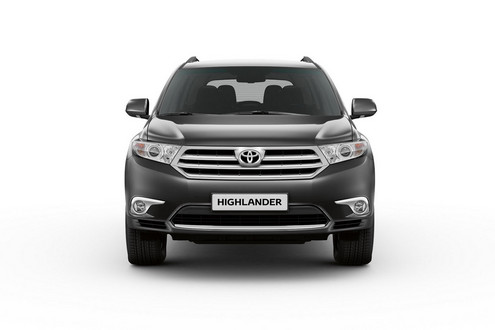
The 2011 Toyota Highlander gets styling revisions and some equipment shuffling. It’s part of a mid-cycle freshening for a vehicle last fully redesigned in model-year 2008. The 2011 Highlander’s basic form doesn’t change. This Toyota remains a carefully calculated compromise between a minivan and an SUV. Styling is more masculine than any minivan’s, and although it has three versatile seating rows, it lacks a minivan’s easy sliding-side-door access and low step-in height. Highlander doesn’t boast the brawny bearing or off-road prowess of a true SUV yet offers all-wheel drive and elevates your eyes level above traffic. And the 2011 Toyota Highlander Hybrid is the only gas-electric seven-seat crossover for sale in the U.S.

The Highlander gets a sophisticated design update for 2011 featuring a new front fascia, hood and fenders, with the profile freshened by black rockers with chrome accents (gas models only). The headlights and tail lamps are also redesigned, as are the 17-inch alloy wheels. The Limited Grade offers stylish 19-inch wheels and also features silver roof rails. The SE grade gains a power liftgate.
The 2011 Highlander Hybrid is more easily distinguished from the gasoline model by its own unique grille and bumper design. It shares the new fenders and hood with the gas Highlander but features color-keyed rockers with chrome accents, plus vertically stacked fog lamps. The projector beam headlights and redesigned taillights feature blue lens covers. Daytime running lamps are now standard on all Highlander models.

Designed at Calty Design Research in Newport Beach, Calif., the second-generation Highlander moves away from traditional SUV styling cues. Clean, sculpted lines, a wide, stable stance and muscular contours give Highlander a contemporary, dynamic presence. The Base grade Highlander could be mistaken for an upgrade model with its six-spoke 17-inch machined alloy wheels, color-keyed power remote outside mirrors, and silver-painted front grille. The Limited looks the luxury part with chrome door handles and roof rails, puddle lamps and rear spoiler.

The Highlander provides an open, airy and versatile interior with seating for seven or up to 95.4 cubic feet of total cargo capacity (94.1 for Highlander Hybrid). There are numerous storage compartments throughout the cabin, along with 10 cup holders, four bottle holders, two front and one cargo-area 12-volt auxiliary power outlets and cargo area tie down hooks.
The Base and SE grades feature a center console, shift knob with silver-painted accents and front driver and passenger assist grips. The center console, shift knob and assist grip on the Limited grade feature wood grain-style trim. Styling features on the inside of the Highlander Hybrid include a silver and wood grain-style interior trim with chrome door handle accents, Optitron meters with blue graphics and a power meter with a hybrid system indicator.
The headrests are adjustable in two ways on the Base grade and four different ways on SE and Limited. The second row provides 40/20/40 split seatbacks. The seat functions as either a three-person bench or, by removing the Center Stow™ seat, a pair of captain's chairs complete with armrests, creating a convenient walk-through area between the seats for easier access to the third row. A Center Stow™ center console can also be placed between the seats to provide additional storage. The second row also slides fore and aft and reclines.
Access to the third-row is made easy by placing the walk-in lever at an easy to reach position at the bottom of the passenger-side second-row seat. Standard one-touch levers inside the cargo area allow the second-row seats to fold forward and flat. The third-row seats function in a similar manner, using a lever in the back of the seat.
Production of the conventional engine Highlander, Toyota’s 12th North American-built model, began in October 2009 at the company’s plant in Princeton, Indiana. Moving the Highlander assembly line to this facility represented a $450 million investment.

Toyota has not released the details for the prices of the 2011 Toyota Highlander lineup yet by the time of this review. However, it is expected that prices will be slightly raised as compared to the 2010 model due to the incorporation of standard and additional features, along with a major facelift given for this product. Starting with last year’s model though, Toyota has broken their own tradition of delivering annual increase to the prices of their model introductions such that it has maintained the 2009 prices. The same thing remains to be seen for this year’s releases, although base price range is expected to be approximately around $28,200 to $33,870.

2011 Toyota Highlander Back view

2011 Toyota Highlander Interior

2011 Toyota Highlander Back Part

2011 Toyota Highlander Seats

2011 Toyota Highlander Engine






































